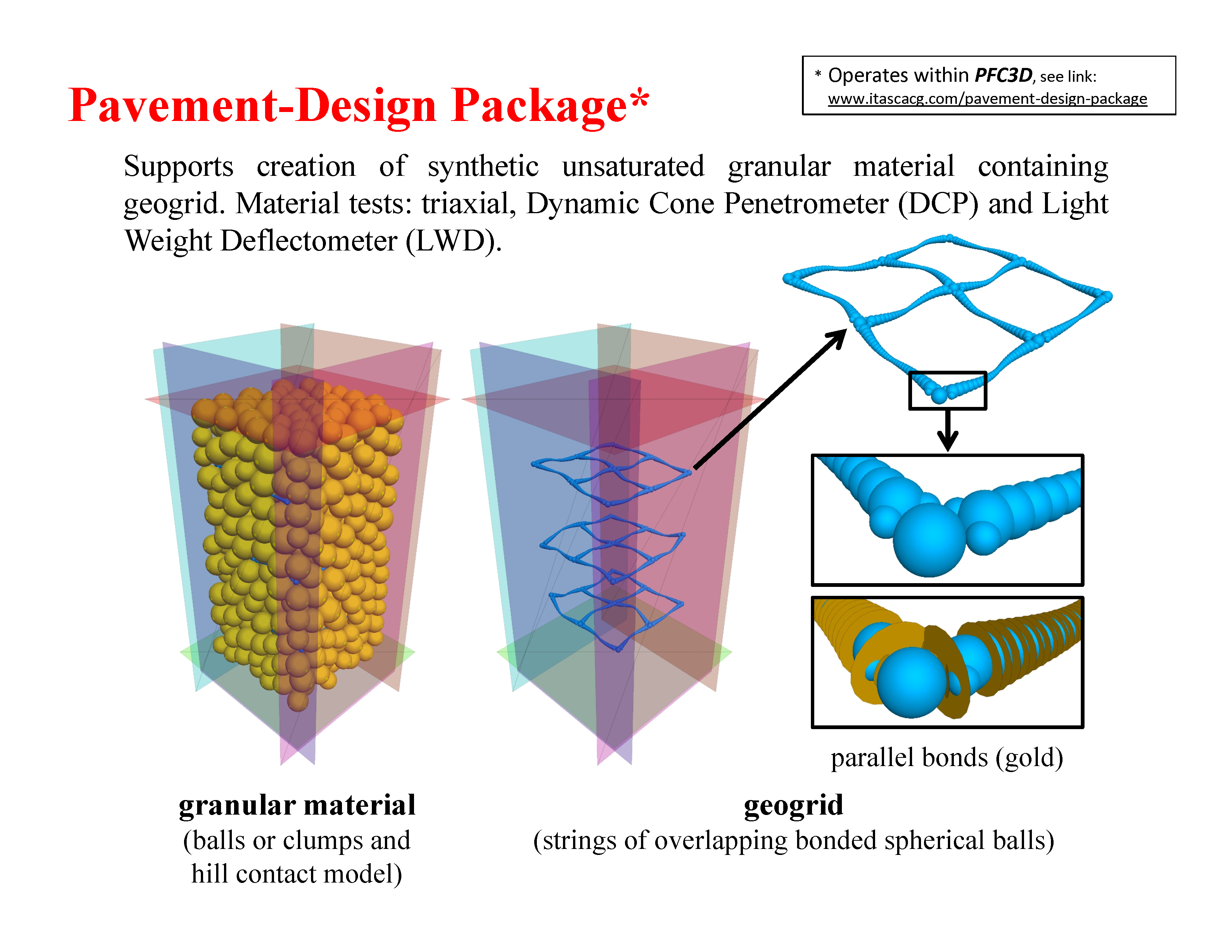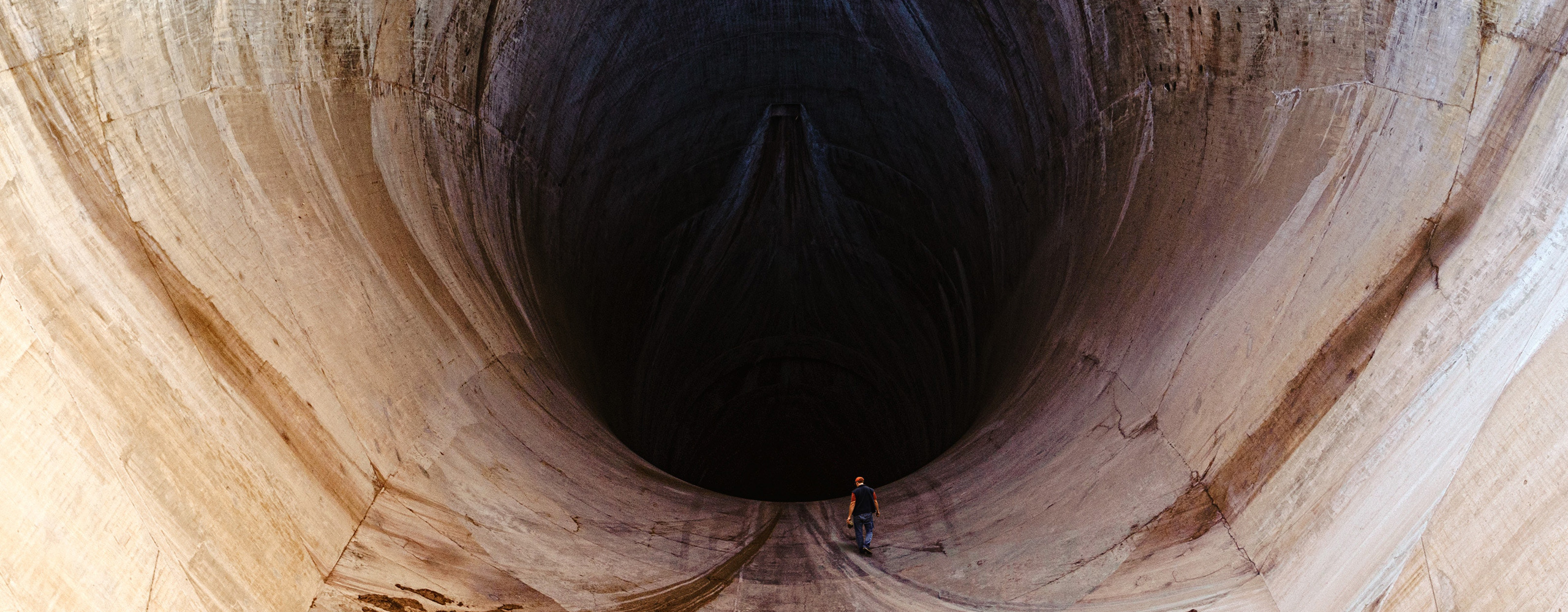
* [The pavement-design package is provided in the form of a consistent set of FISH functions that operate within PFC3D version 5.0. FISH is a programming language embedded within PFC3D. The PFC3D code can be obtained HERE, and the pavement-design package is provided below.
References
Potyondy, D. (2019) "Pavement-Design Package for PFC3D [pdPkg15]," Itasca Consulting Group, Inc., Technical Memorandum ICG16-8528-15TM (April 1, 2019), Minneapolis, Minnesota. DOWNLOAD LINK
The additional references cited above are defined in the references section of the pavement-design package memo, and the documents themselves are provided in the pdPkgN/Documentation directory.
FILES:
pdPkg15 (ZIP, 209 MB)PavementDesignPkg[pdPkg15].pdf (24 MB)
| pdPkg Release | fistPkg Release | PFC3D RELEASE | Date / Description |
|---|---|---|---|
| 15 | 26 | 5.00.39 |
04/08/19 Complete final pdPkg for PFC3D version 5. This package will be ported to operate with PFC3D version 6. Add magazine article (Siekmeier&Bittmann(2019)-MN_UseOfGrid.pdf) to Documentation directory. This article describes the work that has been recognized by the University of Minnesota Center for Transportation Studies 2018 Research Partnership Award to Geogrid Reinforced Aggregate Base Pavement Design. Add report (Siekmeier(2018)-GeogridAggBase.pdf) to Documentation directory. This report utilizes the pavement-design package to provide a performance specification consisting of DCP and LWD target values for geogrid reinforced aggregate base. |
| 14 | 25 | 5.00.35 |
6/22/2018 Provide report (PFC_PavementDesign-Phase2.pdf) and associated documents in Documentation directory. This report summarizes the work for the MnDOT project "Geogrid Specification for Aggregate Base Reinforcement." The pdPkg14 is the deliverable of the project. |
| 13 | 25 | 5.00.32 |
3/10/2018 The package has been provided to John Siekmeier of MnDOT as a deliverable for the project "Geogrid Specification for Aggregate Base Reinforcement." The work is summarized as follows, with documentation listed in square brackets after each item --- see REFERENCES section below for abbreviations.
REFERENCE Mahmud, S.M.N. (2017) "Effect of Particle Size Distribution and Packing Characteristics on Railroad Ballast Shear Strength: A Numerical Study Using the Discrete Element Method," M.S. Thesis, Boise State University [advisor: Deb Mishra]. REFERENCES (in Documentation directory) [fistPkg] Potyondy, D. (2017) “Material-Modeling Support in PFC [fistPkg25],” Itasca Consulting Group, Inc., Technical Memorandum ICG7766-L (March 16, 2017), Minneapolis, MN. [pdPkg] Potyondy, D. (2018) “Pavement-Design Package for PFC3D [pdPkg13],” Itasca Consulting Group, Inc., Technical Memorandum ICG16-8528-15TM (March 9, 2018), Minneapolis, MN. [BCM] Potyondy, D. (2018) “Beam Contact Model [version 1],” Itasca Consulting Group, Inc., Technical Memorandum 2-3558-01:17TM07 (March 9, 2018), Minneapolis, MN. [MV] Potyondy, D. (2018a) "Model-Validation Tests," Itasca Consulting Group, Inc., Technical Memorandum 2-3558-01:17TM52 (March 9, 2018), Minneapolis, MN. MODIFICATIONS
|
| 12 | 25 | 5.00.30 |
4/10/2017 MODIFICATIONS
REFERENCES Potyondy, D. (2017b) "Pavement-Design Package for PFC3D [pdPkg12]," Itasca Consulting Group, Inc., Minneapolis, MN, Technical Memorandum ICG16-8528-15TM (April 6, 2017). |
| 11 | 24 | 5.00.27 |
10/17/2016 MODIFICATIONS
|
| 10 | 23 | 5.00.24 |
06/23/2016 MODIFICATIONS
|
The first column of this table lists the Pavement-Design Package revision number; the second and third columns list the PFC 5.0 FISHTank and PFC3D 5.0 release, respectively, against which the Pavement-Design Package has been tested; and the fourth column describes the Pavement-Design Package revision. Note that each revision of the Pavement-Design Package is expected to operate with a PFC 5.0 FISHTank and PFC3D 5.0 release that is current or newer than that listed. Since newer revisions of the Pavement-Design Package may use features available only in newer revisions of the supporting software, they may not be compatible with older revisions of the supporting software.
